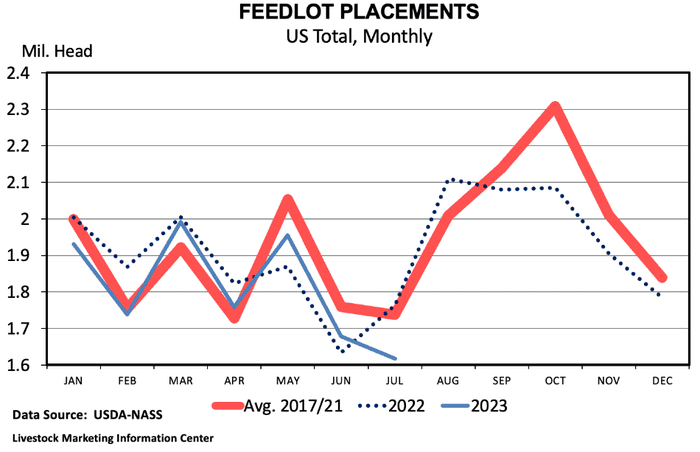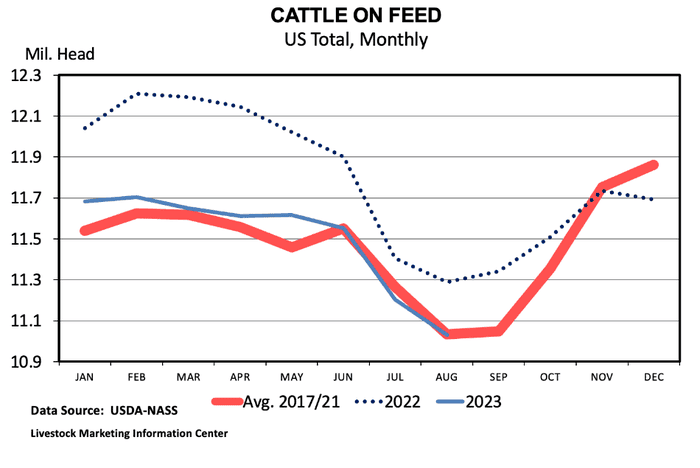
The latest Cattle on Feed Report was released on Friday and delivered a bit of surprise in the number of cattle placed on feedlots during July. The broader takeaway from the report is tighter feedlot supplies and plenty of support for cattle prices. However, there were some interesting details under the surface of the headline.

Placements into feedlots with 1,000 or more head capacity totaled 1.62 million head. This was an 8.3 percent decline from July 2022 and was on the low end of pre-report expectations. With the abnormal exceptions of March and April 2020, this was the lowest monthly placement total since July 2017. Placements in May and June exceeded 2022 levels. So it may be the case that some cattle that might’ve usually been placed in July were pulled into feedlots earlier this year.
While this report did not include the mix of heifers on feed, it is possible (though not certain) that some of the decline in placements was driven by a few more heifers being retained for breeding purposes. We’ll have to wait until the October report for the next breakout of heifers vs. steers on feed for more context. When the beef herd does start expanding again, it will do so at the expense of fewer heifers heading to feedlots.
The late summer period is always an interesting period to follow cattle on feed dynamics. Feedlot supplies typically hit their seasonal low point for the year in August or September before ramping back up into the fall. What that seasonal low-point will be in 2023 is especially interesting given the contraction in beef cow and calf supplies the past few years.
Marketings were 5.3 percent lower during July than from a year ago. Altogether, the report showed estimates of 11.03 million cattle on feed as of August 1st. This is a 2.3 percent (or 259,000 head) decline from August 1, 2022 and is the lowest monthly total since September 2019.

About the Author(s)
You May Also Like




